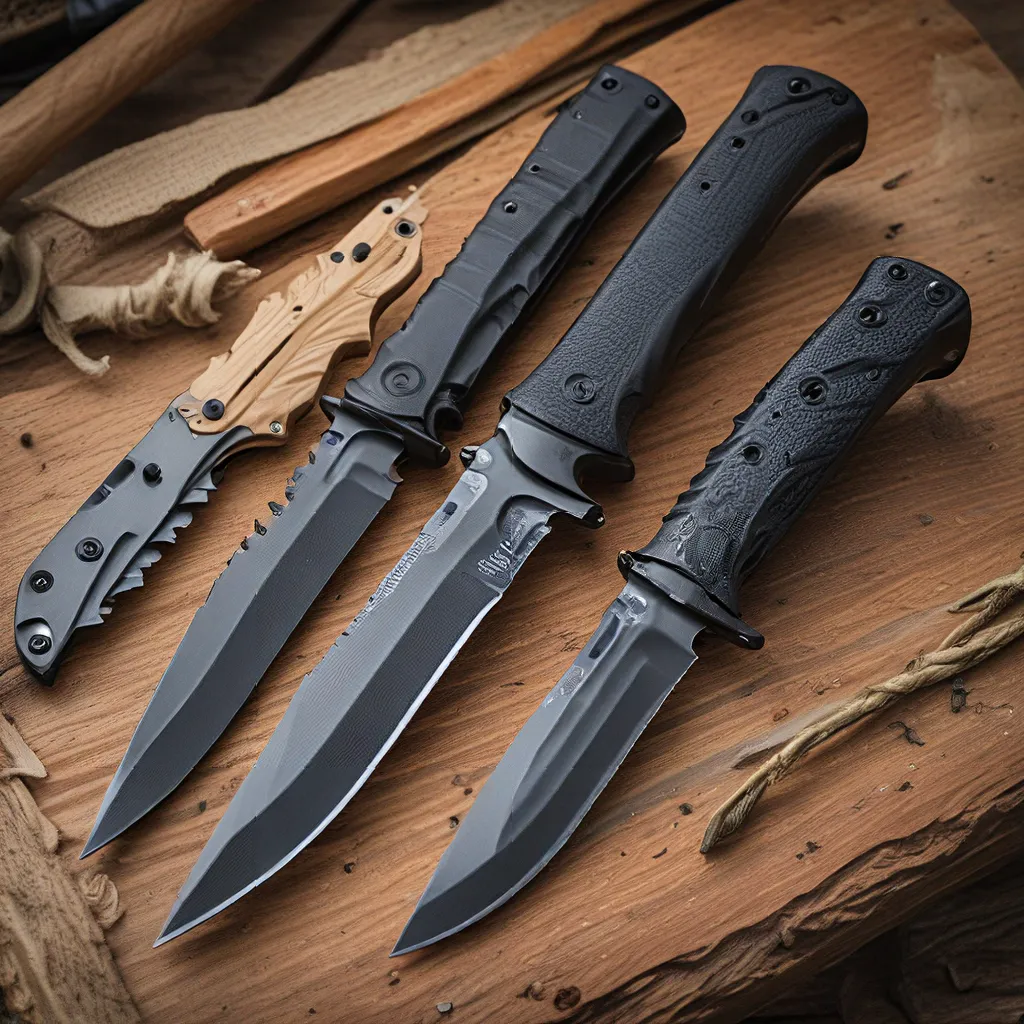
As a seasoned knife enthusiast, I’ve always been fascinated by the intricate dance between form, function, and the laws that govern their use. In the realm of tactical knives, this dance becomes a veritable tango, where the line between utility and legality can sometimes blur. Today, I invite you to join me on a journey to unravel the complexities surrounding the legality of these enigmatic blades.
The Tactical Knife: A Multifaceted Tool
Tactical knives have long been a subject of fascination, both for their practical applications and their captivating aesthetics. These blades are designed to be versatile, capable of tackling a wide range of tasks, from cutting through thick materials to self-defense. Their sleek, angular designs and durable construction make them a popular choice among outdoor enthusiasts, law enforcement personnel, and even military personnel.
However, the very features that make tactical knives so appealing can also raise concerns about their legality. In many jurisdictions, the definition of a “legal” knife can be a nuanced and often contentious topic, with laws and regulations varying widely across regions. This can create a minefield of uncertainty for both knife enthusiasts and the general public.
Navigating the Legal Landscape
To better understand the legal landscape surrounding tactical knives, it’s essential to explore the various factors that come into play. Blade length, blade style, and overall knife design are all elements that can impact the legality of a particular knife. In some areas, specific blade shapes or lengths may be prohibited, while in others, the focus may be on the intended use of the knife.
Interestingly, the legality of tactical knives can also be influenced by broader societal perceptions and attitudes towards weapons. In some communities, these blades may be viewed as inherently dangerous, while in others, they are seen as practical tools. This dichotomy can lead to a patchwork of laws and regulations that can be challenging to navigate.
Striking a Balance: Blade Length and Design
One of the most contentious aspects of the tactical knife debate is the issue of blade length. Many jurisdictions have strict limits on the maximum allowable blade length, often citing concerns about public safety. However, these restrictions can create challenges for individuals who use tactical knives for legitimate purposes, such as outdoor activities or professional tasks.
Blade design can also play a crucial role in the legality of a tactical knife. Serrated edges, double-edged blades, and certain blade shapes may be prohibited in some areas, as they are perceived to be more dangerous or primarily intended for combat. Responsible knife enthusiasts must navigate this complex landscape, ensuring that their prized possessions remain within the bounds of the law.
Embracing Responsible Ownership
As a knife enthusiast, I’ve come to appreciate the importance of responsible ownership. This means understanding and adhering to local laws, being mindful of where and how I carry my knives, and using them only for their intended purposes. It also involves educating myself and others about the nuances of knife legality, dispelling any misconceptions, and promoting a culture of responsible knife use.
In my experience, open and honest dialogue is key to navigating the complex legal landscape surrounding tactical knives. By engaging with lawmakers, law enforcement, and the broader community, we can work together to strike a balance between public safety and the legitimate needs of knife enthusiasts.
The Evolving Landscape: Staying Informed
As with many legal and regulatory frameworks, the landscape surrounding tactical knives is constantly evolving. New laws and regulations are introduced, existing ones are refined, and societal attitudes can shift over time. Responsible knife owners must remain vigilant, staying up-to-date with the latest developments and adapting their practices accordingly.
Ongoing research and open discussions are crucial in this dynamic environment. Experts and enthusiasts alike are continuously exploring the nuances of knife design, usage, and legality, providing valuable insights that can inform both policymaking and personal decision-making.
Conclusion: Balancing Passion and Practicality
As I reflect on my journey through the intricate world of tactical knives and their legal implications, I’m struck by the delicate balance that must be struck. On one hand, I cherish the craftsmanship, functionality, and aesthetic appeal of these remarkable tools. On the other, I recognize the legitimate concerns surrounding public safety and the need to navigate the complex legal landscape with care and responsibility.
Ultimately, I believe that by embracing a spirit of openness, collaboration, and continuous learning, we can find a path that celebrates the passion of knife enthusiasts while upholding the wellbeing of our communities. It is a journey of exploration and compromise, but one that holds the promise of a future where the blade of contention can be forged into a tool of understanding and responsible enjoyment.
So, fellow knife enthusiasts, let us embark on this journey together, navigating the complexities, challenging the assumptions, and shaping a world where our blades can shine with the brilliance of their purpose and the wisdom of their wielders.


